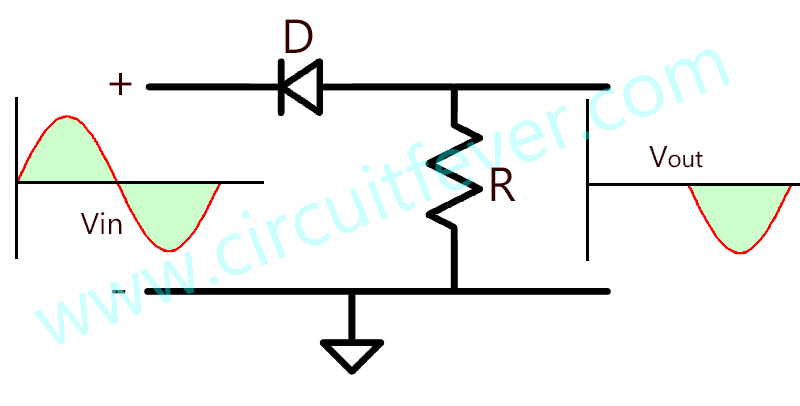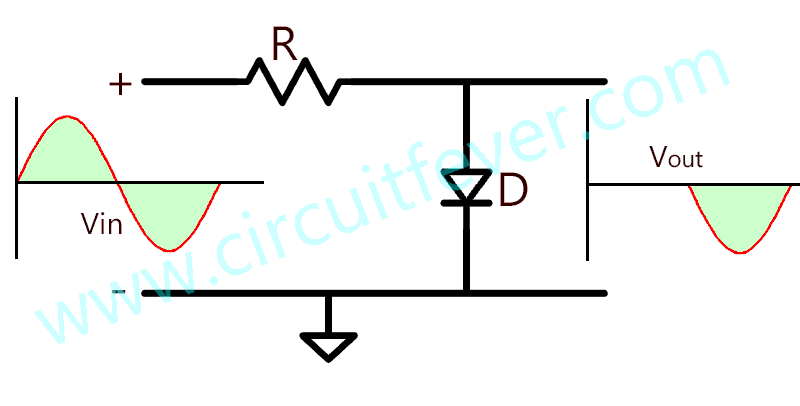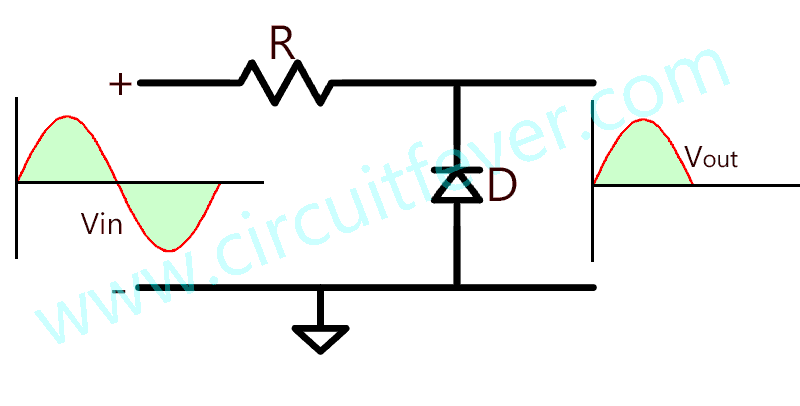Clipper Circuits using Diode
The arrangement of the diode network which has the ability to clip off some portion of the input signal without distorting remaining part is known as diode clippers.
Clippers are used to transmit the desired part of the signal by clipping off the undesired part of the signal. Clippers are of two types:
- Series Clippers and
- Parallel clippers
In series clipper, the diode is connected in series with the load and in the parallel clipper, the diode is connected in parallel with the load. Depending upon the arrangement of the diode, either positive or negative portion is of the input signal is clipped off. Hence clippers can further be classified into two categories:
- Positive Clippers
- Negative clippers
Note: The diode is assumed as an ideal diode. i.e the voltage drop across the diode and the forward resistance of the diode is zero.
Positive Clippers
The circuit used to clip off the positive part of the signal is known as the positive clipper. This can be achieved by arranging the diode in series or parallel with the output.
Simple Positive Series Clipper
The circuit diagram of a simple series positive clipper is shown below:

This circuit consists of a diode connected in series with load resistor R. The input is applied to the diode terminal and the output is taken from the resistor 'R'.
During the positive cycle, the diode becomes reverse biased and act as an open switch hence no output is obtained. During the negative cycle, the diode becomes in forward biased and act as a closed switch. In the period, the output voltage is equal to the input voltage.
Simple Positive Parallel Clipper
In this circuit, the diode is connected parallel with the output as shown below:

During the positive cycle, the diode becomes in forward biased and act as a closed switch. The diode is assumed to ideal so, there is no output for the positive cycle. During the negative cycle, the diode becomes in reversed biased and act as an open switch and the output voltage is equal to the input voltage.
Negative clippers
The circuit used to clip off the negative part of the signal is known as the negative clipper. This can be achieved by reversing the direction of the diode of the positive clipper circuit.
Simple Negative Series Clipper
circuit diagram of a simple series negative clipper is shown below:

This circuit consists of a diode connected in series with load resistor R and output is taken from the resistor.
During the positive cycle, the diode becomes in forward biased and act as a closed switch. In this duration, the output voltage is equal to the input voltage. During the negative cycle, the diode becomes reverse biased and act as an open switch hence no output is obtained.
Simple Negative Parallel Clipper
In this circuit, the diode is connected parallel to the output as shown below:

During the positive cycle, the diode becomes in reversed biased and act as an open switch and the output voltage is equal to the input voltage.
During the negative cycle, the diode becomes in forward biased and act as the closed switch. The diode is assumed to ideal so, there is no output for the negative cycle.
